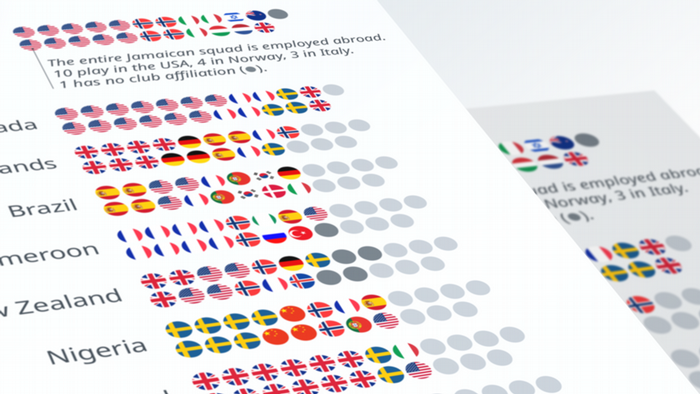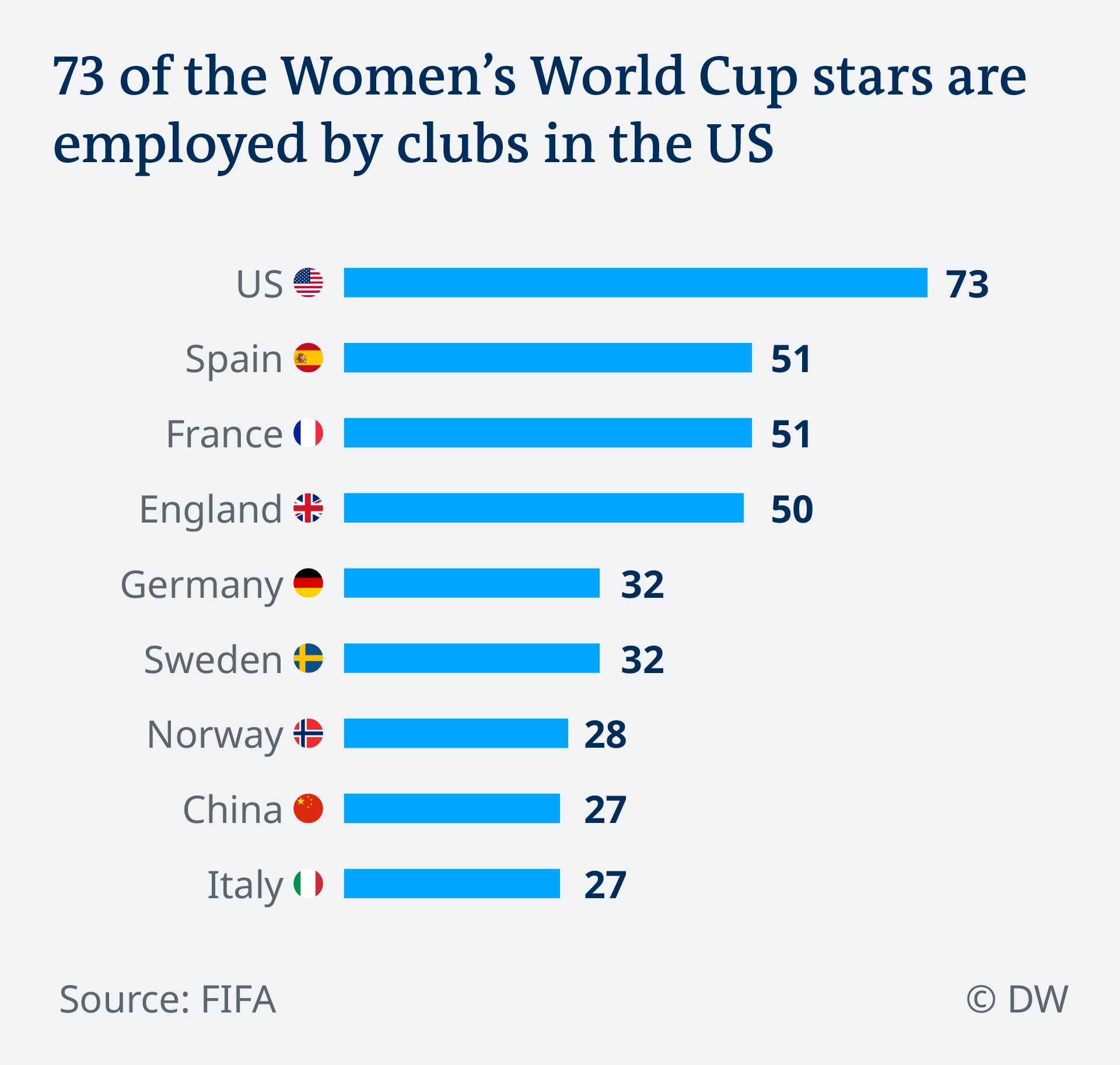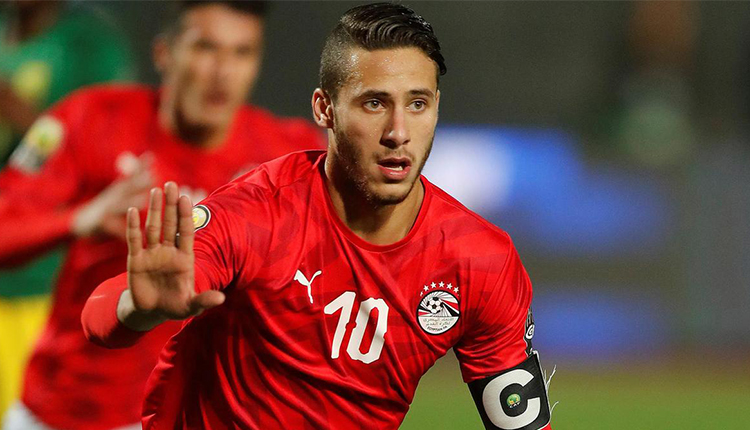
When they’re not playing for their national teams, 73 of the 552 women competing in this year’s World Cup are currently employed by US clubs alone. And that’s no wonder: For everything from funding and salaries to public support, the professional conditions for female football players are much better in the United States than they are in most other countries. These factors concentrate top players from around the world in leagues in a relatively few countries.

“Many women, of course, change teams because they’re looking for new challenges,” says Gitta Axmann of the Institute of Sociology and Gender Studies at the German Sport University Cologne. But, beyond different training styles, the decision often comes down to the conditions that female players face: Many leagues struggle with funding for trainers or travel costs, as well as access to stadiums or simple equipment such as shoes and balls.
Women’s clubs in the United States continually dominate international rankings — which may be partly because men’s football has been slow to take off there, Axmann says: “Women’s football is seen as its own game.” As a result, the players don’t have to compete for attention with the men’s team the way they would elsewhere.
The Jamaican team: Qualified for the first time, all players employed abroad
The players of some World Cup teams are entirely employed by clubs abroad. The Jamaican team, for example, which qualified for the World Cup for the first time this year, has no players at all training with Jamaican clubs.
Ten play in the United States; the rest are in Norway, Italy and elsewhere. The team, who call themselves the Reggae Girlz, dropped out of the tournament in the group stage. But, considering the circumstances, it’s impressive that they managed to qualify at all. Jamaica has a population of only 3 million, and football is far from the most popular sport in the country. Disinterest in women’s soccer and attitudes toward female players have made it hard to grow a following on any level, and the Jamaica Football Federation has disbanded the team multiple times.
In the past five years, though, the Jamaica women have gained the support of Cedella Marley, the daughter of Bob Marley, who has raised thousands of dollars in funding for the team, as well as boosting public attention and support. Still, though, money is on the player’s minds: “Financially, it doesn’t make sense,” Jamaica forward Ashleigh Shim told The New York Times. Some Jamaican players reported earnings from football of just a few hundred dollars; one earned nothing at all.
Leagues worldwide struggle to attract players
In other countries, the situation may be less severe, but similar stories can be found in many places. In Brazil, the Netherlands and Canada, as well, more than half of the current World Cup squad are legionaries, meaning they’re employed abroad. Or take Nigeria: All 23 players were born in the country, but only 7 are currently training in Nigerian clubs.

Of course, these kinds of fluctuations aren’t exclusive to the women’s team; male football players also frequently change clubs across borders. These changes are an indicator of where conditions and funding for football are best.
Some players give up a lot to play for the top leagues
For female footballers, accepting a job abroad is often less a matter of preference and more a matter of necessity, Axmann says: “In many countries, women still can’t openly play football at all. And, even in Germany, I’ve known top-class players who have quit football because they couldn’t support themselves through the sport.”
Playing in a different country often means leaving friends, family and home behind. When asked what the biggest sacrifice she had ever made for football was, defender Wendie Renard, who was born in the French overseas department of Martinique, told The New York Times: “I left my family for France when I was 14 and a half.” Renard has played for France in the past three World Cups.
With their comparatively high budgets for women’s football, France, England and Spain have developed into top destinations for players in recent years. Spain’s national women’s team qualified for the World Cup for the first time in 2015. Back then, only 21 Women’s World Cup athletes total played for FC Barcelona, Atletico Madrid or other top Spanish teams. Now, 51 players from 12 different national teams play for Spanish clubs — including all but three of the women on Spain’s squad itself.
Support for women’s football makes Spain more attractive for players
It is difficult to pinpoint a specific reason for this shift. But Spain, like other European countries, has significantly improved its support for women’s football. The Spanish player Veronica Boquete can attest to that, having played for clubs in Spain, Germany, the US and elsewhere, in addition to for the Spanish national team at the 2015 World Cup. “The development in the last two to three years has been very good,” Boquete told DW.
The country made headlines earlier this year when 60,739 fans turned out to watch a game between Atletico Madrid and FC Barcelona in the prestigious Wanda Metropolitano stadium. That is also why support from men’s teams is crucial, Axmann says: “Even just an investment from the men’s team or, as in the case of Atletico Madrid, access to the men’s stadiums, can help substantially.” And, she says, though attendance and TV viewership are still dismal overall, events like this World Cup help get the public thinking about women’s football — and therefore, she says, get sponsors thinking about it too.
The 2019 Women’s World Cup is proof of the positive changes that have been instituted in women’s football in recent years. “We’re seeing a clear increase in performance across the world, Axmann says. “England, Sweden or Germany can’t waltz through like they used to: Teams from Australia, Asia and Africa have improved drastically on the athletic level.” This process, she says, is just getting started.




